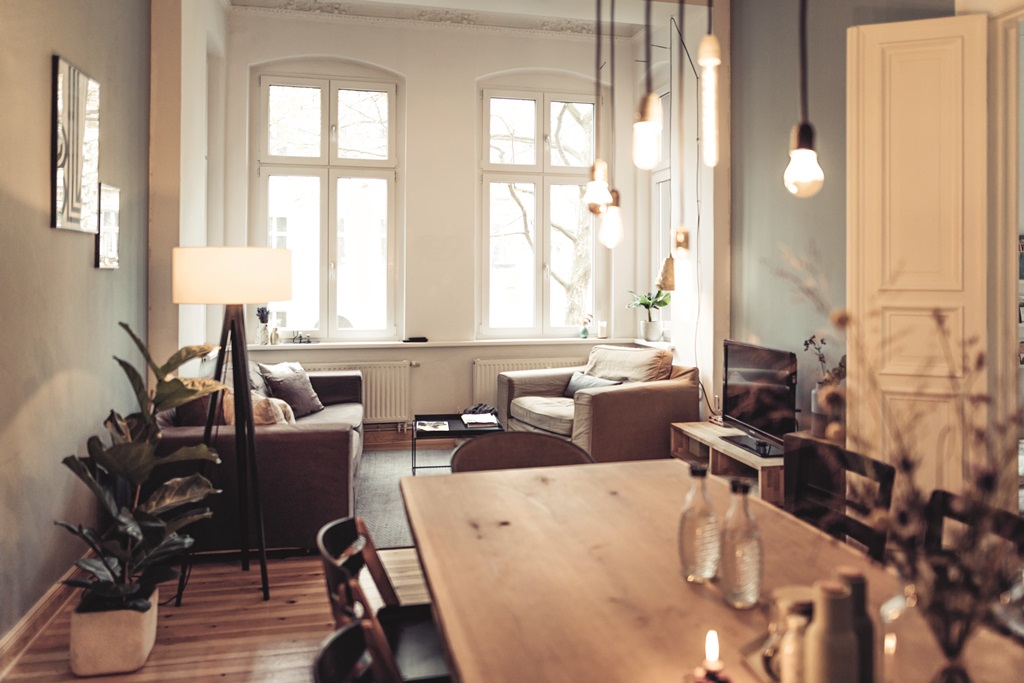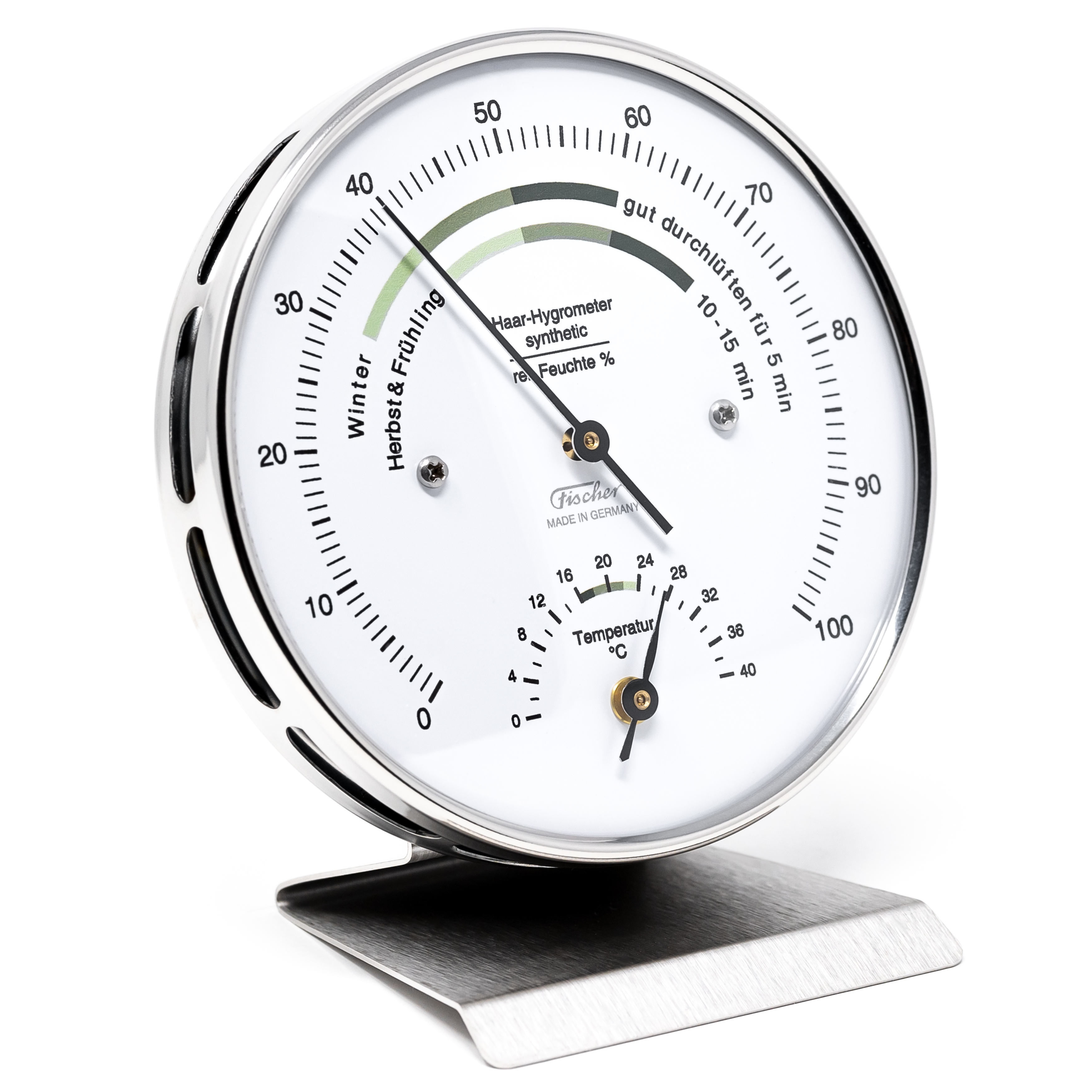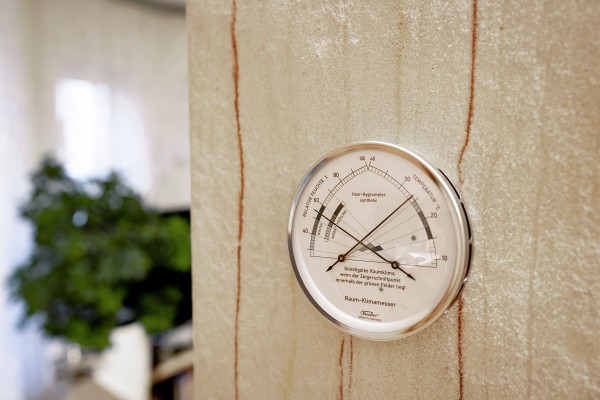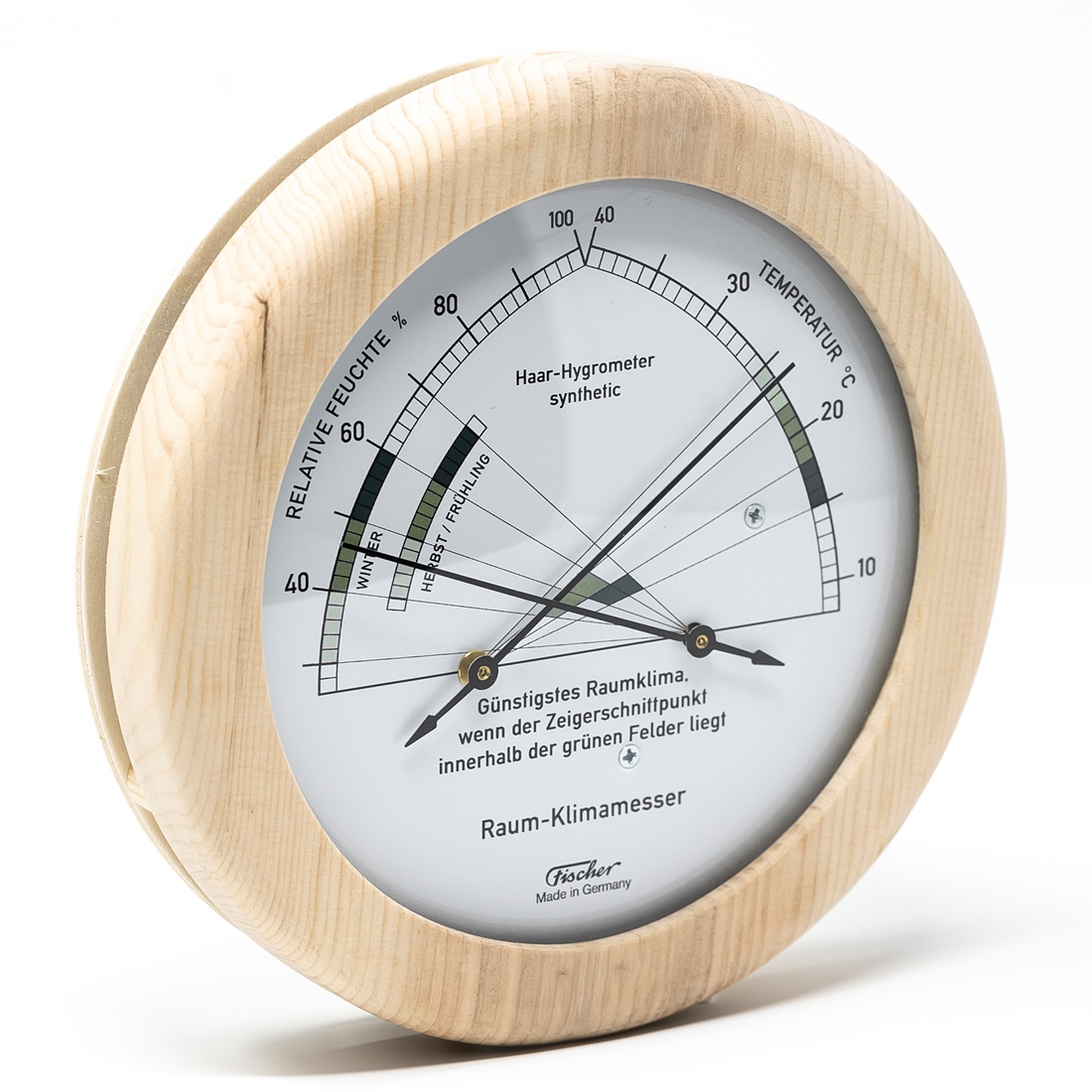The optimal air humidity to protect against bacteria
Even if they are not visible, they are the first things to be noticed when entering a room: the temperature and humidity. Both factors ensure comfortable and healthy living. Likewise, you can work more concentrated and focused at your workplace if there is optimum humidity in the office. Depending on how the room is used, a healthy room climate is between 18 and 24 °C. In contrast, the ideal air humidity is 35-65%. Proper ventilation is a prerequisite for maintaining these values. A tilted window hardly helps during an eight-hour working day. It is much better to open the windows wide several times a day and, in the best case, to ventilate the rooms crossways with the doors also open. This so-called push ventilation ensures that the walls do not cool down, as is the case with tilted windows. It also prevents condensation of humidity on the walls.
Recognition the optimum humidity for a healthy room climate
When entering a room, the temperature is noticeable faster than the humidity. If rooms are too warm or too cold, act immediately. It is more difficult to recognize the ideal humidity. If a room seems particularly stuffy, the humidity is too high. Dry air is almost imperceptible in normal rooms at the first moment. Hygrometers can be used to ensure that there is an optimum humidity in the room. These determine the air humidity in the room. Analogue hair hygrometers use human hair or industrially produced (synthetic) hair, which expands when the humidity rises and contracts when the humidity falls. This change in length is transmitted to the hygrometer's integrated lever mechanism and pointer, which then displays the values. If the values do not correspond to an ideal humidity, it is recommended to take measures and open the windows wide.


How can the ideal air humidity contribute to protection against bacteria?
If the air humidity in a room is not right, bacterial growth can be encouraged. A relative humidity of more than 50 % in rooms (especially in winter) promotes micro bacterial growth, resulting in the formation of mould. Dust mites also multiply more quickly, which stands in the way of healthy living. If your premises are infested with mould or mites, respiratory diseases or allergies can develop. If there are also bacteria or other pollutants in the air, the risk of infection is even higher. To prevent the formation of bacteria, the ideal air humidity should therefore be maintained. If your rooms are heated often and a lot, the relative humidity will decrease and the air in the room will become increasingly dry. If the air humidity is too low at below 30%, other complaints such as burning or tears in the eyes, infections of the upper respiratory tract or a dry nose can occur. This also increases the chance of bacteria formation. To restore a healthy room climate, the windows should therefore be opened again quickly or humidifiers should be installed in the room.
Suitable measuring instruments for the production of optimal air humidity for healthy living
Since the ideal humidity in rooms often cannot be directly recognized, there are helpful measuring instruments on which these can be checked. Besides hygrometers, climate meters are also suitable for ensuring a healthy indoor climate. These show not only the relative humidity but also the temperature. Various FISCHER room climate meters also show the ideal humidity and temperature. So you can see at a glance whether your room has a healthy indoor climate or not. If you then take appropriate measures, you will make a significant contribution to protection against bacteria. Do you have questions about our FISCHER measuring instruments? Then please contact us at any time!







